
THE MANY LIVES OF BAC 1-11 510ED G-AVMT

Serial Number 147 - First Flight 10th January 1969 - Delivery 28th March 1969
This aircraft was built by the British Aircraft Corporation at Hurn Airport and has accumulated some 50,000 flying hours and carried out more than 50,000 take off and landings.
"Golf Alpha Victor Mike Tango" was one of 18 BAC 1-11s that were ordered by British European Airways on 27 Jan 1967. 97 seats were installed in a single class configuration. The aircraft was put into service from Berlin-Tempelhof on the company’s internal German network as well as on the Heathrow to Manchester route. A 1-11 division was set up in Manchester in 1971. This became the 1-11s main operating base in the 1970s.The livery you see below was the first applied to "MT" as it was rolled out of the BAC factory at Hurn. The red tail livery above was withdrawn as a result of the Berlin contract and is only added above to show how the original BEA aircraft looked as they left the factory up to G-AVMM.

The "blue tail Super one-eleven" livery worn for Berlin Tempelhof services in 1969
All these aircraft were unusual in so much as they were fitted with a non-standard Smiths Industries SF5 flight director and compass system. In fact the instrument layout was designed around the HS Trident fleet to enable some commonality between the two fleets. Another strange decision of BEA was to exclude the provision of forward airstairs on the aircraft. This caused one or two problems during later service until they were eventually added to this particular aircraft in the mid 1990s. It was a very busy period for the newly delivered 1-11s. They flew as many as twelve sectors a day with scheduled 20 minute turnarounds but managed to achieve this with a superb reliability record for a new type.
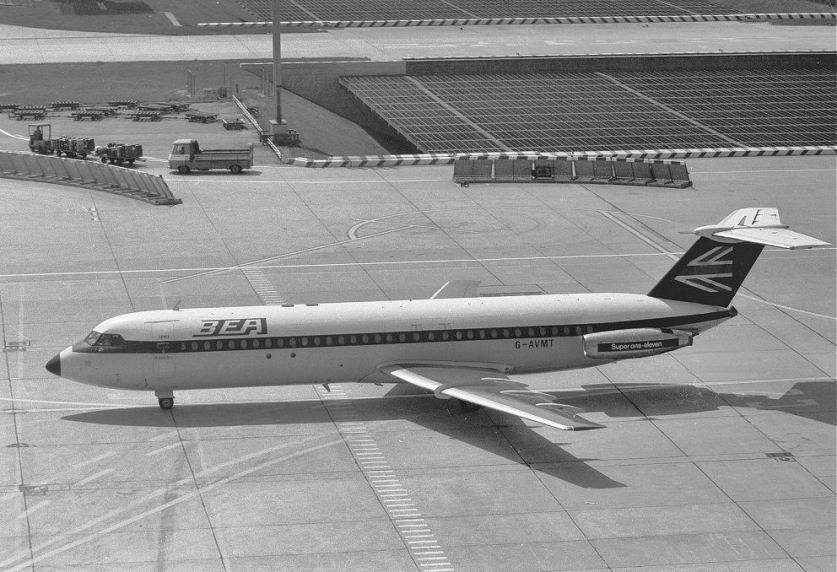
The "quarter Jack" BEA livery worn in the early 1970s
The aircraft served for BEA until the company was merged with BOAC to form British Airways on the 1st April 1974. Three different liveries were worn by BEA's 1-11s. The first being the short lived "red square" colour scheme which only appeared on the first few aircraft. The first change came about when Air France pulled off the Berlin route. Joint BEA / Air France services commenced with the "Super one-eleven" fleet. To avoid a loss of face by Air France’s withdrawal from the market BEA agreed to paint a neutral colour scheme on their 1-11 fleet. This arrangement commenced from the summer 1969 flying program. The new scheme incorporated a smaller BEA logo at the forward end of the fuselage and a blue tail with the "super one-eleven" legend. "MT" was delivered in the second livery. The final scheme incorporated the "quarter jack" logo which was worn until the airline became part of British Airways.

The interim livery used by British Airways prior to respaying into full BA livery
G-AVMT continued in service with British Airways on short haul routes and as a shuttle back up aircraft until retirement on the 30 September 1992. It was flown to Hurn and placed into storage on the 1st October 1992. It wore three further liveries with British Airways, firstly with the familiar "British Airways" logo, then with the "British" only logo and finally with the new British Airways scheme that was adopted during the mid 1980s.
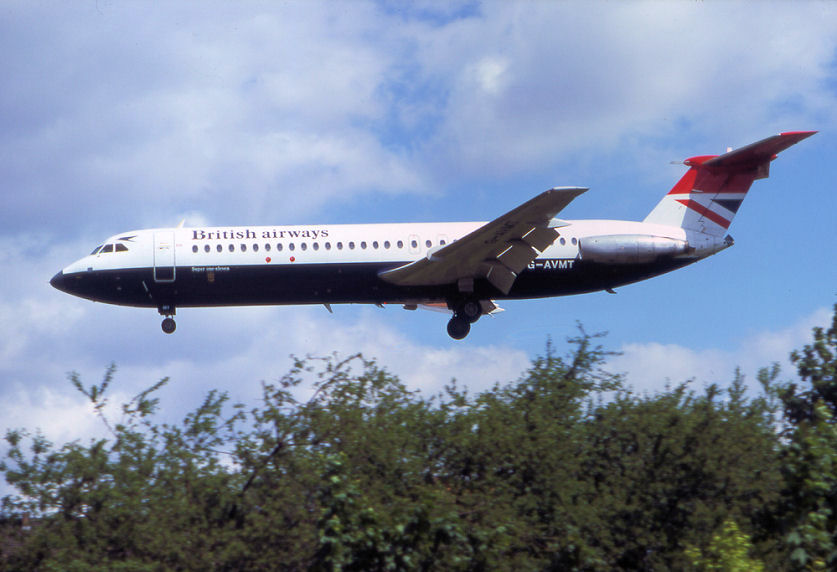
The original British Airways livery worn from the mid 1970s to early 80s

The "British" titles. worn during the early 1980s
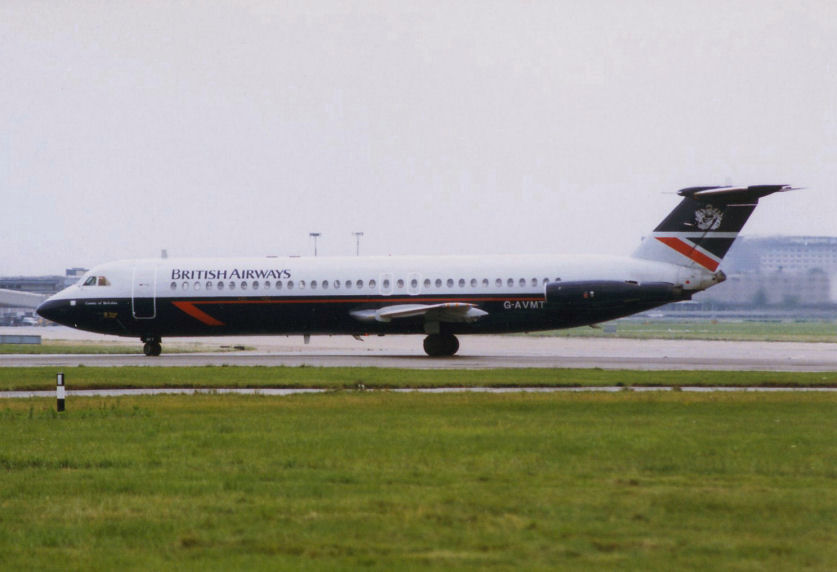
The new British Airways "Landor" livery worn from the mid 1980s to retirement
The very last British Airways 1-11 series 510ED service took place on the 31st December 1992 with G-AVMS. In nearly 25 years of service, not a single major accident had occurred on the 1-11 fleet! During 1993 British Airways had started to dispose of their stored 1-11 fleet, although prospects were not looking very good. Two aircraft went to new homes at Duxford and Cosford museums. As for the other 16 aircraft it looked like the scrapmans axe until a company called European Aviation bought the remaining fleet.
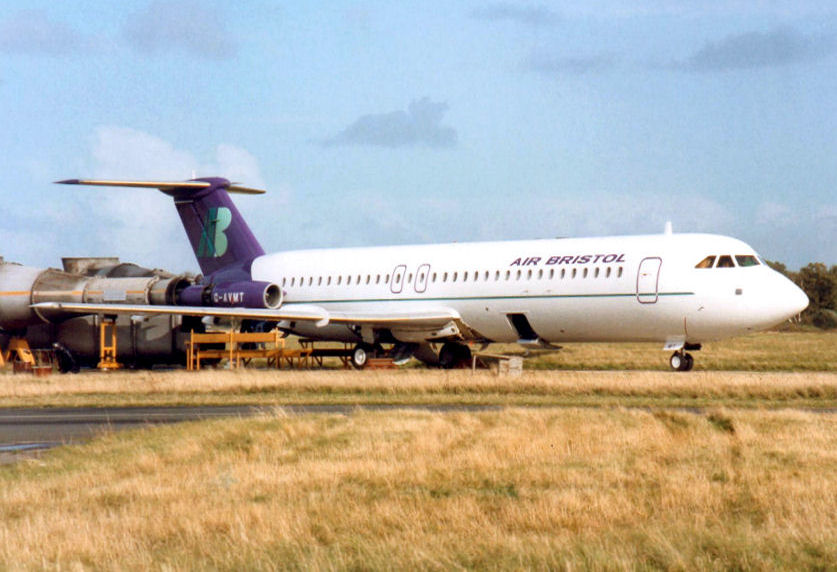
The first Air Bristol livery worn from 1993 to 1995 on lease from European Aviation
This company had been formed in 1989 by Paul Stoddart. He now owns a sizeable fleet, which includes BAC 1-11s, Boeing 737s and more recently Boeing 747s. The first two 1-11s to enter service were G-AVMT and G-AVMW which were leased to Air Bristol in October 1993 and based at Bristol Filton transferring BAe employees between Filton and the Airbus factory in Toulouse. In fact Filton was selected as the main operating base for European Aviation. The entire fleet was therefore flown from Hurn to Filton. It was not long though before European Aviation decided that Filton was not ideal for their operations so the 1-11s moved back to Hurn and their original production site where they have remained until this day. In the meantime G-AVMT had been sprayed into a new livery with a huge "SHANNON" title running along the full length of the fuselage. This new livery was given to the aircraft as Air Bristol had expanded their operations and commenced a new route from London Stansted to Shannon. The airline also took the opportunity of remarketing itself as "AB Airlines" and hence the name "AB Shannon" for this particular aircraft.
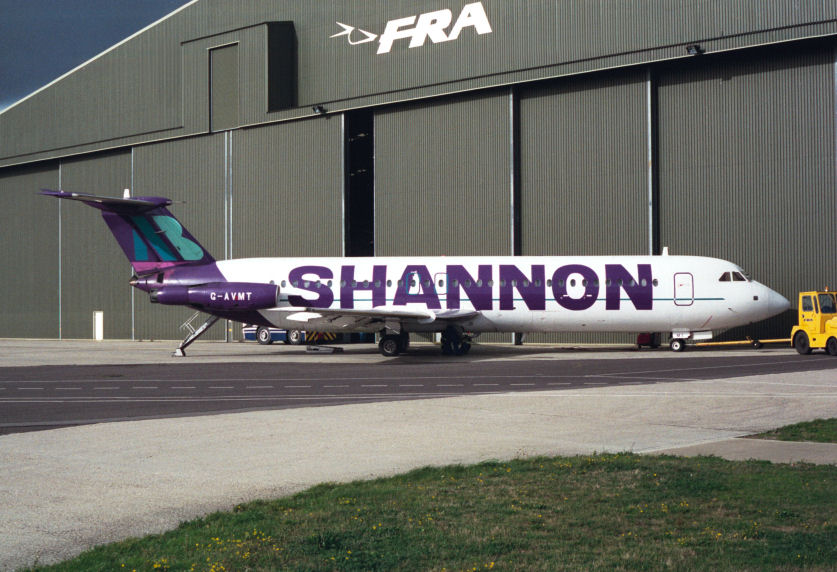
Renamed AB Airlines during 1996 the "Shannon" titles were applied
It was in this livery that G-AVMT had its proudest moment as it participated in Heathrow Airport’s 50th anniversary flypast and was viewed by many thousands of people on the ground and by millions more as the event was televised around the country.

The livery worn by Bournemouth based Euroscot Express during 1997
After a couple of years in service with AB Airlines the aircraft was returned to European and leased out to new Hurn based operator Euroscot Express. It flew from Hurn to Edinburgh and Glasgow for a couple of seasons until Euroscot replaced it with an ATR72. It returned to European and appeared in the more familiar "EAL" colour scheme for the first time.
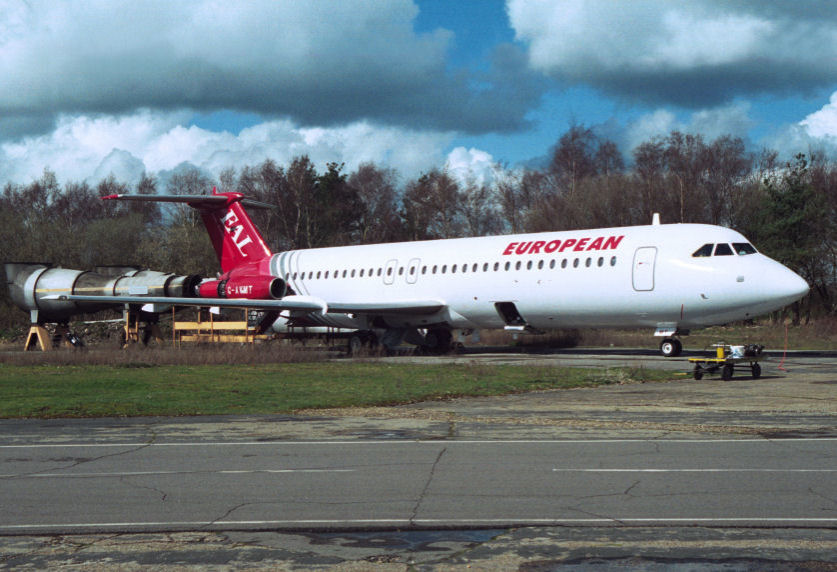
"MT" finally got to wear the familiar "EAL" livery from 1998 to 1999
Towards the end of 1999 it was once again leased to another new operator "fly European". This was another short-lived company and by the summer of 2000 it was back in service with European spending much of its time based at Gatwick.
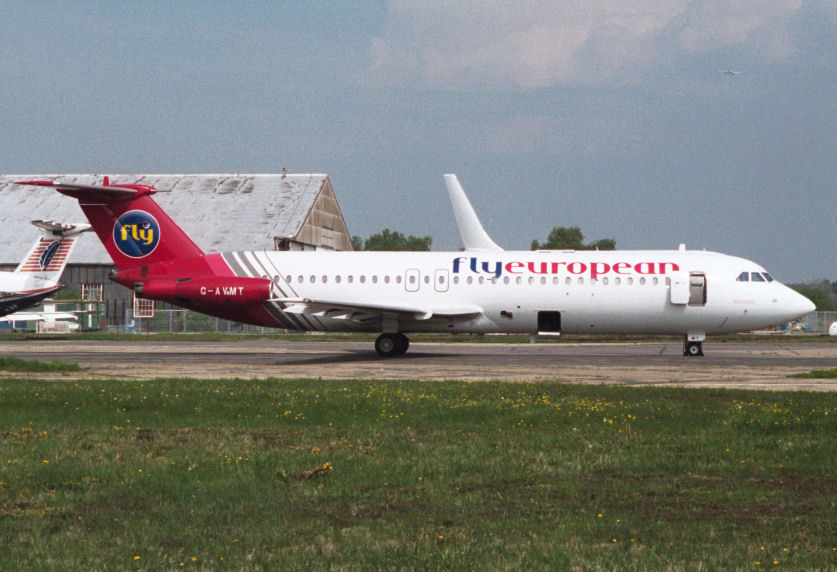
The short lived Fly european livery worn during 2000
The biggest change in its use came in 2001 when it appeared in its current livery.
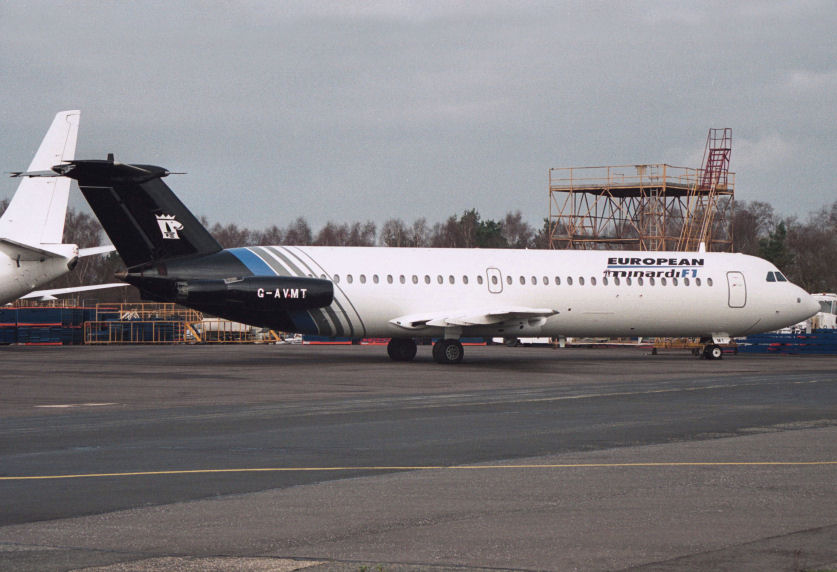
The final livery. The European Minardi scheme applied during 2001
Paul Stoddart had recently bought the Minardi F1 racing team. Therefore he decided that it would be appropriate to have a company aircraft to take the racing team around Europe to the various Grand Prix races. It appeared from the spray shop resplendent in its new European Minardi F1 livery in April 2001. It looked very smart indeed. It was used throughout the 2001 grand prix season in a corporate layout which basically involved removing many of the seats from the cabin. It was also available for other ad hoc executive charters. It carried out its last flight on the 13th February 2002 and was placed into storage at Hurn. European Aviation tried to sell it for over a year without success. It was decommissioned in 2004 and broken up in November. The fuselage survives as a cabin trainer at Cardiff Airport.
So that is just about the end of the G-AVMT story. 33 years, 50,000 hours, 50,000 landings, 12 different liveries! What a history!